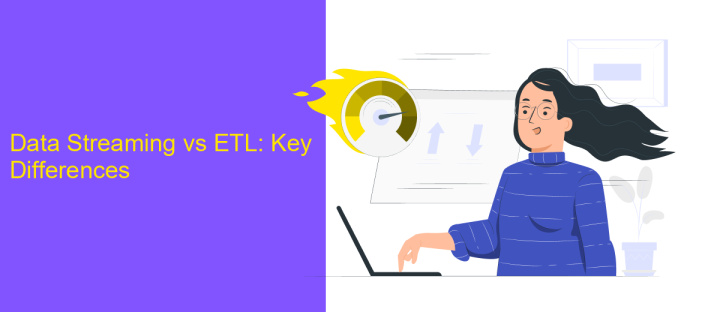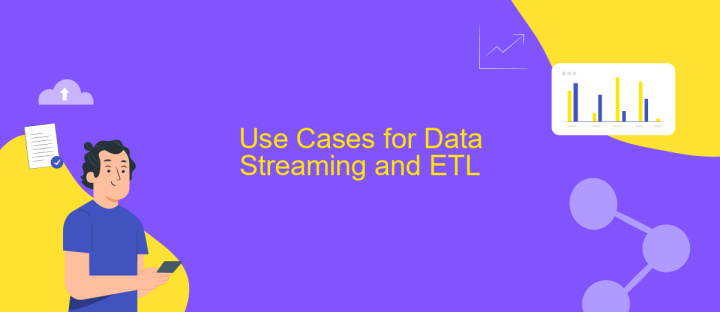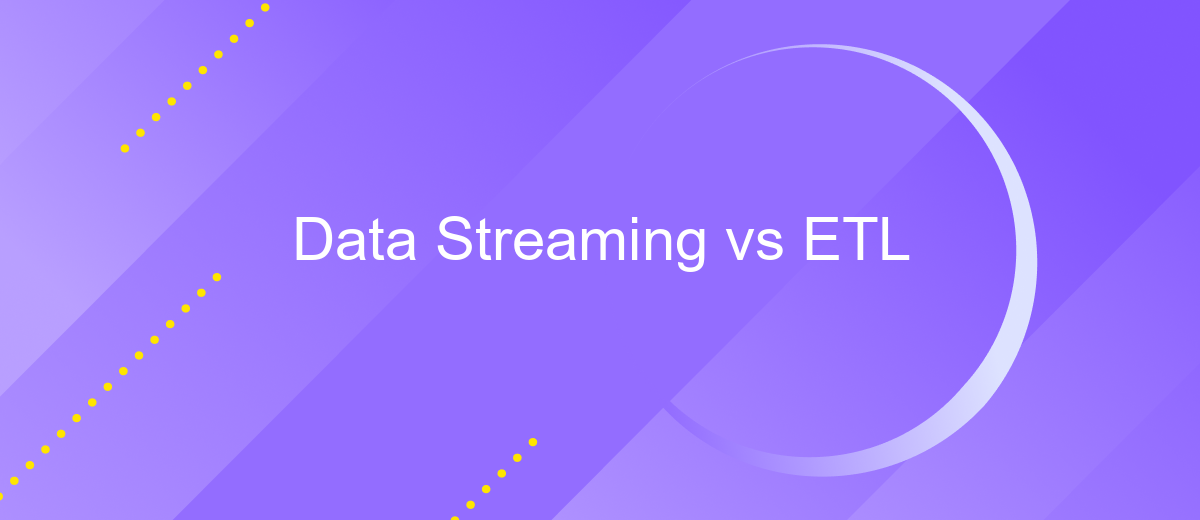Data Streaming vs ETL
In today's data-driven world, businesses require efficient methods to process and analyze vast amounts of information. Data streaming and ETL (Extract, Transform, Load) are two prominent approaches that serve this purpose. While data streaming offers real-time data processing, ETL is known for its batch processing capabilities. This article explores the key differences, advantages, and use cases of both methodologies.
Introduction
In today's data-driven world, organizations are constantly seeking efficient ways to process and analyze vast amounts of data. Two primary methods for handling data are Data Streaming and ETL (Extract, Transform, Load). While both approaches aim to facilitate the movement and transformation of data, they serve different purposes and are suited for distinct use cases.
- Data Streaming: Continuous, real-time data processing.
- ETL: Batch processing of data at scheduled intervals.
- Use Cases: Data Streaming is ideal for real-time analytics, while ETL is better for periodic data processing and integration.
Choosing between Data Streaming and ETL depends on the specific needs of your organization. For instance, platforms like ApiX-Drive can simplify the integration process, enabling seamless data flow between various applications and services. Understanding the strengths and limitations of each method will help you make an informed decision that aligns with your data strategy and business objectives.
Data Streaming vs ETL: Key Differences

Data Streaming and ETL (Extract, Transform, Load) are two distinct approaches to data processing, each with its own set of advantages and use cases. Data Streaming involves the continuous, real-time processing of data as it flows into a system. This allows for immediate analytics and decision-making, making it ideal for applications requiring real-time insights, such as financial trading or monitoring IoT devices. In contrast, ETL processes data in batches, which can introduce latency but is highly effective for handling large volumes of data that do not require immediate processing, such as data warehousing and business intelligence applications.
Another key difference lies in the complexity and setup of integrations. Data Streaming often requires sophisticated infrastructure and can be complex to implement, whereas ETL processes are generally easier to set up, especially with tools like ApiX-Drive, which simplifies the integration of various data sources and destinations. ApiX-Drive offers a user-friendly interface and pre-built connectors, making it easier for businesses to automate data workflows without extensive technical expertise. Consequently, the choice between Data Streaming and ETL depends on the specific needs and capabilities of the organization, as well as the nature of the data being processed.
Use Cases for Data Streaming and ETL

Data streaming and ETL are two distinct methods for handling data, each with its own set of use cases. Data streaming is ideal for scenarios requiring real-time data processing, while ETL is more suited for batch processing and data warehousing.
- Real-time Analytics: Data streaming allows for immediate insights, making it perfect for monitoring live events, fraud detection, and real-time recommendation systems.
- Data Integration: ETL is commonly used for integrating data from multiple sources into a centralized data warehouse, enabling comprehensive reporting and analysis.
- IoT Applications: Data streaming is essential for Internet of Things (IoT) applications where data from sensors and devices needs to be processed in real-time.
- Historical Data Analysis: ETL is beneficial for historical data analysis, where large volumes of data need to be processed and stored for long-term insights.
For seamless integration between data sources and destinations, services like ApiX-Drive can be extremely useful. ApiX-Drive simplifies the process of setting up data pipelines, whether you are using data streaming or ETL, by providing an intuitive interface and a wide range of supported integrations.
Benefits of Data Streaming and ETL

Data streaming and ETL (Extract, Transform, Load) are two crucial methodologies in data management, each offering unique benefits. Data streaming allows real-time data processing, enabling businesses to make immediate decisions based on current information. This capability is vital for industries requiring instant insights, such as finance and healthcare.
On the other hand, ETL is a more traditional approach, focusing on batch processing. It is highly effective for transforming large volumes of data into a structured format suitable for analysis. ETL ensures data integrity and consistency, making it invaluable for long-term data storage and historical analysis.
- Real-time decision making with data streaming
- Structured data transformation with ETL
- Improved data integrity and consistency
- Scalability and flexibility in data management
Both data streaming and ETL can be integrated using services like ApiX-Drive, which facilitate seamless data flow between various platforms. By leveraging such integration tools, businesses can harness the strengths of both methodologies, ensuring efficient and accurate data processing tailored to their specific needs.


Challenges of Data Streaming and ETL
Data streaming and ETL processes face several challenges that can impact their efficiency and reliability. One primary challenge is the handling of large volumes of data in real-time, which requires robust infrastructure and scalable solutions to ensure seamless data flow and processing. Additionally, maintaining data quality and consistency across various data sources can be difficult, especially when dealing with unstructured or semi-structured data formats. Ensuring low latency and high throughput is crucial for real-time analytics, which often necessitates sophisticated algorithms and optimized system architectures.
Another significant challenge is the integration of diverse data sources and systems. Setting up and managing these integrations can be complex and time-consuming. Tools like ApiX-Drive can simplify this process by providing automated, user-friendly solutions for connecting various applications and data sources. However, even with such tools, ensuring secure data transfer and compliance with data privacy regulations remains a critical concern. Furthermore, balancing the cost of infrastructure, tools, and human resources against the benefits of real-time data processing and traditional ETL workflows requires careful planning and strategy.
FAQ
What is the main difference between Data Streaming and ETL?
When should I use Data Streaming over ETL?
Can Data Streaming and ETL be used together?
What are some common challenges with Data Streaming?
How can I automate and integrate Data Streaming and ETL processes?
Do you want to achieve your goals in business, career and life faster and better? Do it with ApiX-Drive – a tool that will remove a significant part of the routine from workflows and free up additional time to achieve your goals. Test the capabilities of Apix-Drive for free – see for yourself the effectiveness of the tool.

